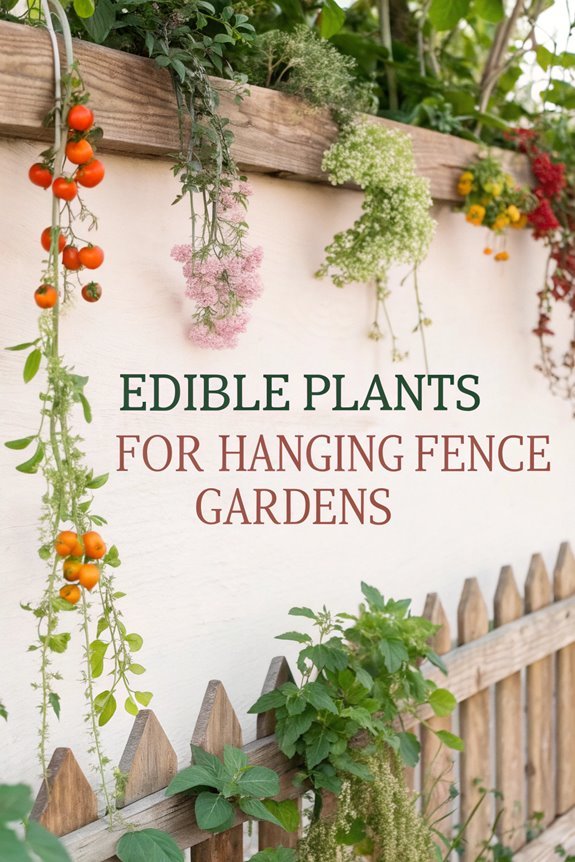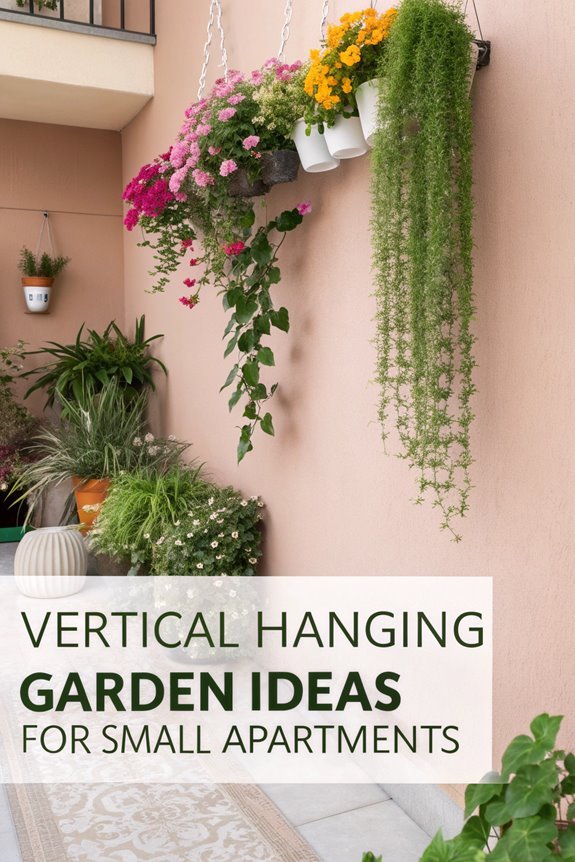15 Small Flowering Plants for Vibrant Rock Gardens
Looking to brighten your rock garden? Small flowering plants like Alpine Asters and Creeping Phlox can create a lively atmosphere while attracting pollinators.
Additionally, Dwarf Irises and Bluebells add their own unique charm. Curious about which plants will thrive in your rocky oasis? Let’s explore!
Alpine Aster (Aster Alpinus)
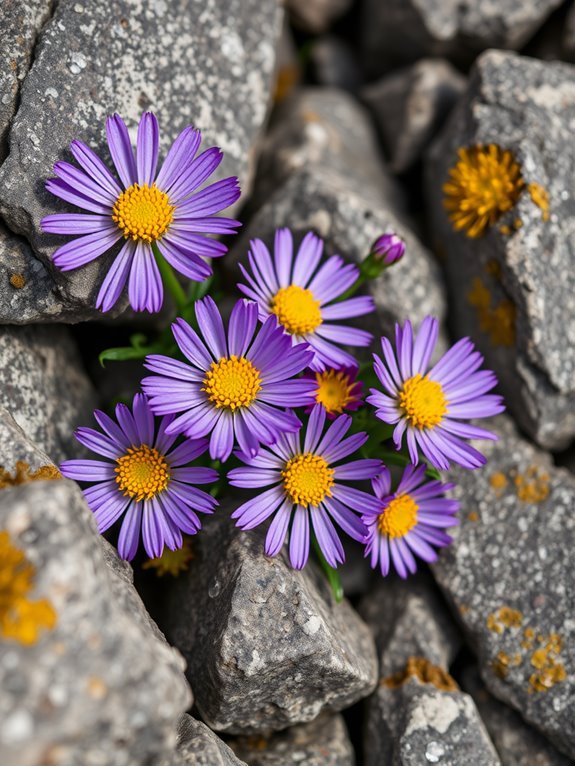
If you’re looking to add a splash of color to your rock garden, the Alpine Aster (Aster alpinus) is a fantastic choice!
These charming little plants bloom in vibrant shades of purple, pink, and white, bringing joy to any rocky nook. They thrive in well-drained soil and love full sun, so make sure they’re basking in those rays.
Plus, they’re hardy and low-maintenance, perfect for gardeners who want beauty without the fuss. Just imagine the delight when butterflies stop by for a visit!
With Alpine Asters, your rock garden will be the talk of the neighborhood—who wouldn’t want that?
Creeping Phlox (Phlox Subulata)
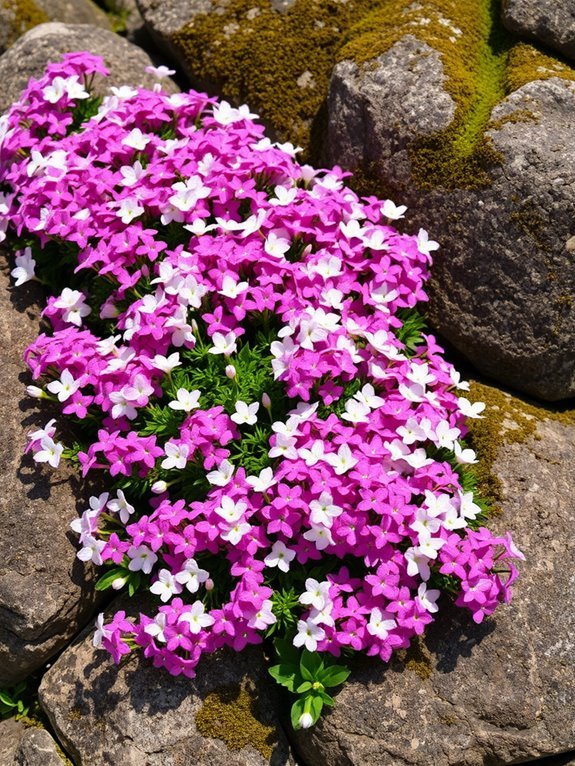
Creeping Phlox (Phlox subulata) is like a colorful carpet for your rock garden, and it’s sure to steal the show!
This perennial spreads out beautifully, creating a vibrant blanket of blooms in shades of pink, purple, or white. You’ll love how it thrives in full sun and poor soil, making it a low-maintenance superstar.
As spring arrives, it bursts into a delightful display, attracting butterflies and bees. Just imagine hosting a garden party, and your guests can’t help but admire your floral masterpiece!
Rock Soapwort (Saponaria Ocymoides)
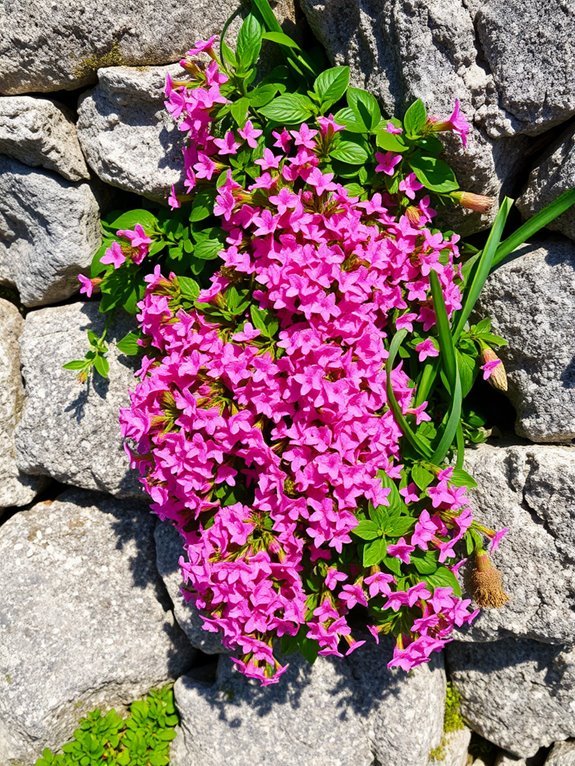
Rock Soapwort (Saponaria ocymoides) is a delightful gem that deserves a spot in your rock garden! This charming perennial showcases clusters of pink flowers that bloom in spring, adding a pop of color to your landscape.
Plus, it’s a tough little plant, thriving in poor soil and full sun. Here’s how to enjoy Rock Soapwort to the fullest:
- Plant in well-drained soil to prevent root rot.
- Use it as a ground cover for a vibrant look.
- Attract pollinators with its lovely blooms.
- Enjoy its charming fragrance during those sunny days!
Get ready to fall in love!
Dwarf Iris (Iris Pumila)
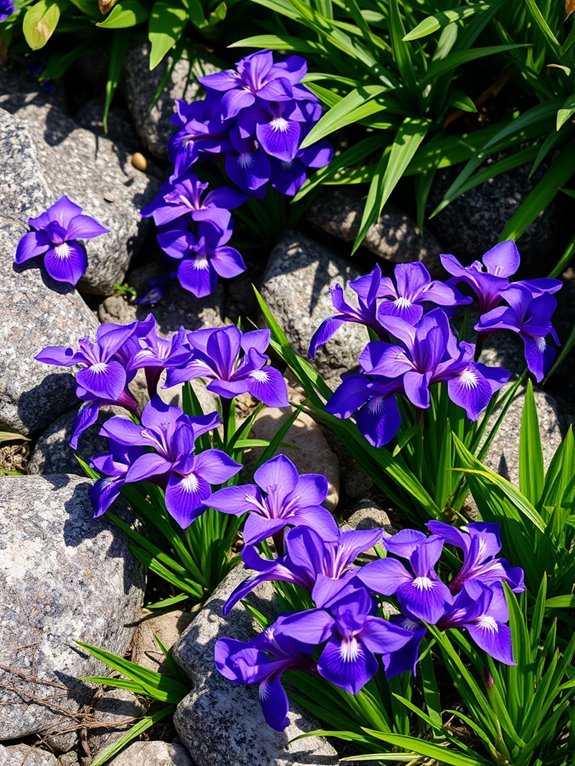
Dwarf Iris (Iris pumila) is like a little burst of sunshine for your rock garden!
These charming gems stand only about 6 to 12 inches tall, making them perfect for tight spaces. They bloom in early spring, flaunting vibrant hues of blue, purple, and yellow, bringing joy to your garden after winter’s gloom.
You’ll love how easy they’re to care for; they thrive in well-drained soil and full sun. Just imagine their colorful faces peeking out between rocks!
Plant them in clusters for a stunning effect. Plus, bees adore them—talk about a win-win for your garden!
Bluebell (Campanula Poscharskyana)
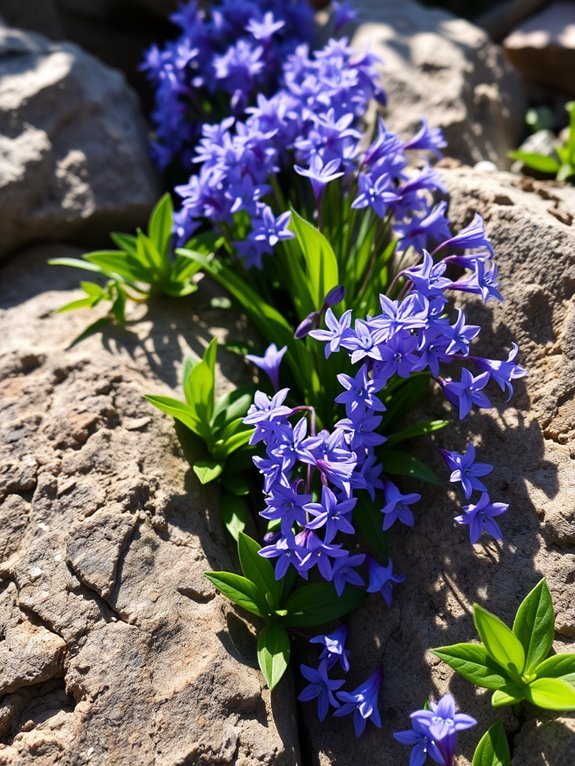
Imagine a cascade of charming blue flowers that dances gracefully over your rock garden—meet the Bluebell, or Campanula poscharskyana!
This delightful perennial brings a splash of color and whimsy to your landscape, thriving in sunny spots and well-drained soil. You’ll love how these enchanting blooms create a soft carpet effect, attracting bees and butterflies.
Here’s how to make the most of your Bluebells:
- Plant in clusters for a stunning visual impact.
- Water regularly during dry spells.
- Deadhead spent flowers to encourage more blooms.
- Pair with low-growing plants for a layered look!
Get ready for a vibrant display!
Stonecrop (Sedum Spp.)
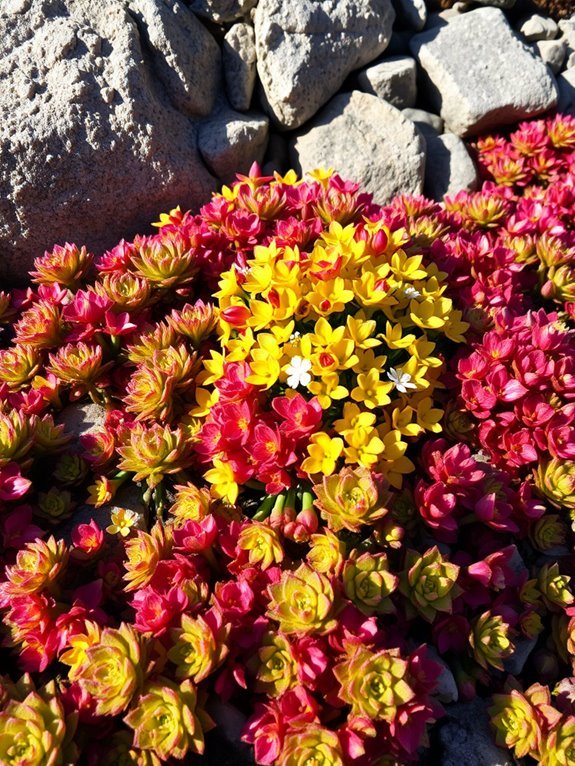
When it comes to adding a touch of charm to your garden, Stonecrop (Sedum spp.) is like the trusty sidekick you didn’t know you needed!
These hardy little succulents thrive in rocky spots, so you won’t have to worry about pampering them. They’re incredibly low-maintenance, requiring just a sprinkle of water now and then.
With vibrant colors and unique textures, they create a stunning tapestry that’ll catch your eye. Plus, they attract butterflies, giving your garden a lively buzz!
Miniature Rose (Rosa Spp.)
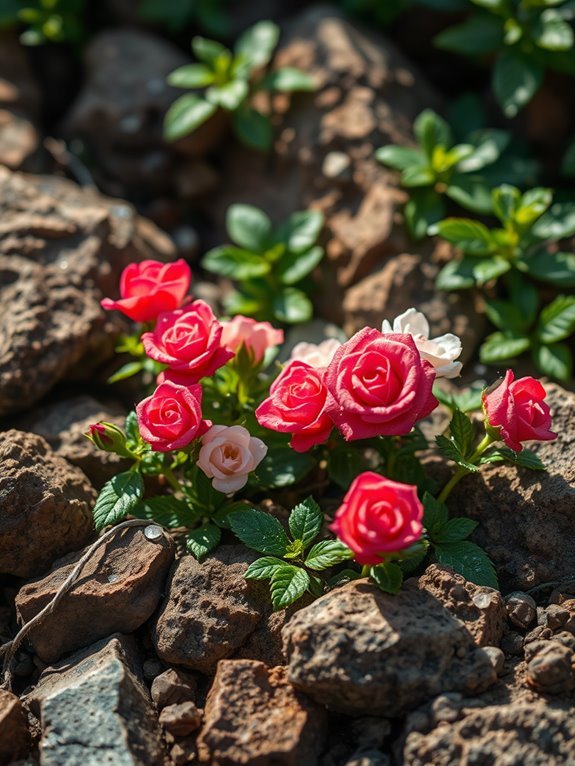
After enjoying the hardy resilience of Stonecrop, it’s time to sprinkle some romance into your rock garden with Miniature Roses (Rosa spp.).
These charming little blooms add a delightful pop of color, making your garden feel like a fairytale. They’re perfect for small spaces and can even thrive in containers!
Here’s how to keep your Miniature Roses flourishing:
- Sunshine: Ascertain they get at least six hours of sunlight daily.
- Water: Keep the soil moist, but not soggy.
- Prune: Trim dead blooms to encourage new growth.
- Fertilize: Use a balanced fertilizer every month during the growing season.
Fairy Fan Flower (Scaevola Aemula)
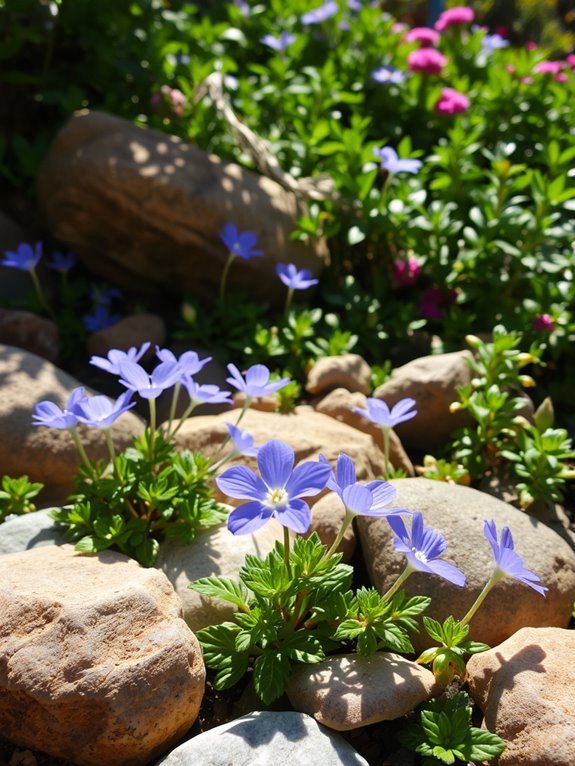
If you’re looking to add a splash of color and a touch of whimsy to your rock garden, the Fairy Fan Flower (Scaevola aemula) is just the ticket!
This charming little plant boasts vibrant, fan-shaped flowers that bloom in shades of purple, blue, and white. They’re like nature’s confetti, brightening up your space effortlessly.
Plus, they thrive in sunny spots and love well-drained soil, making them perfect for rock gardens. With minimal care, you’ll enjoy their cheerful presence all season long.
Just be careful not to trip over their beauty while trying to admire it—those flowers can be quite distracting!
Sand Verbena (Abronia Umbellata)
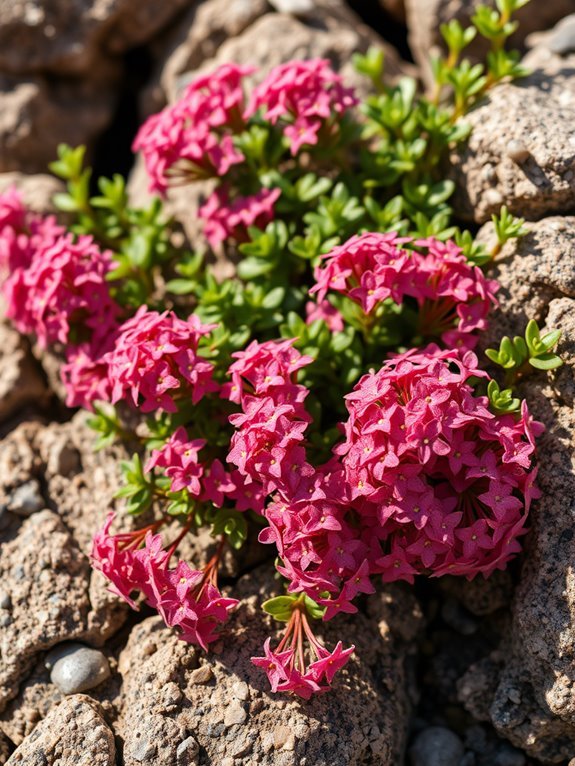
Just like the Fairy Fan Flower brightens up your rock garden, Sand Verbena (Abronia umbellata) adds a delightful burst of color that’s hard to resist!
This charming plant thrives in sunny spots, spreading its clusters of vibrant blossoms, and attracting butterflies like they’re on a mission.
You’ll love how low-maintenance it is, making your gardening life easier! Plus, it’s perfect for filling in gaps between rocks.
Here are a few tips to enjoy Sand Verbena:
- Plant it in well-draining soil.
- Water sparingly to prevent rot.
- Use it as ground cover.
- Enjoy the butterflies it attracts!
Lewisia (Lewisia Cotyledon)
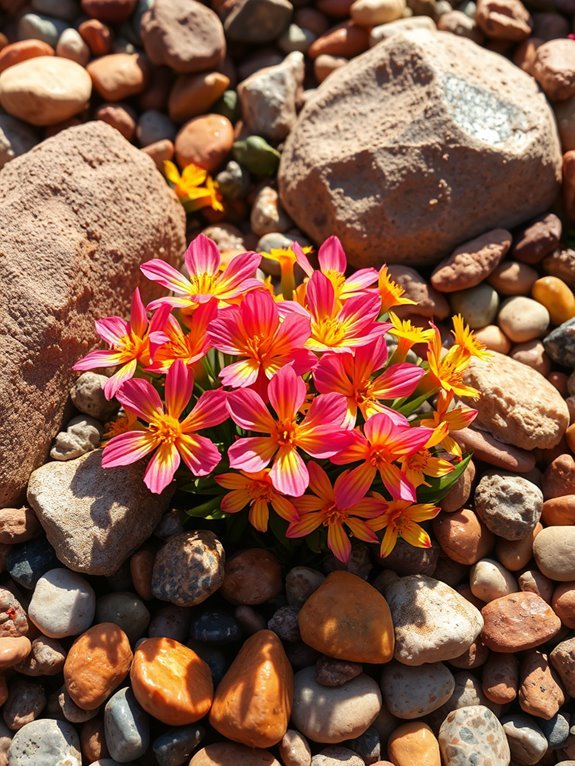
When you’re searching for a rock garden superstar, Lewisia (Lewisia cotyledon) should definitely be on your radar! This charming little plant thrives in rocky spots, bringing vibrant colors to your garden.
With its rosette of succulent leaves and stunning pink, white, or yellow flowers, it’s hard not to fall in love. Plus, Lewisia is as tough as nails, tolerating drought while still looking fabulous.
Just imagine those cheerful blooms popping against the stones, making your garden look like a masterpiece! So, if you’re ready to elevate your rock garden game, Lewisia is the perfect choice—trust me, it’ll steal the show!
Johnny Jump-Up (Viola Tricolor)
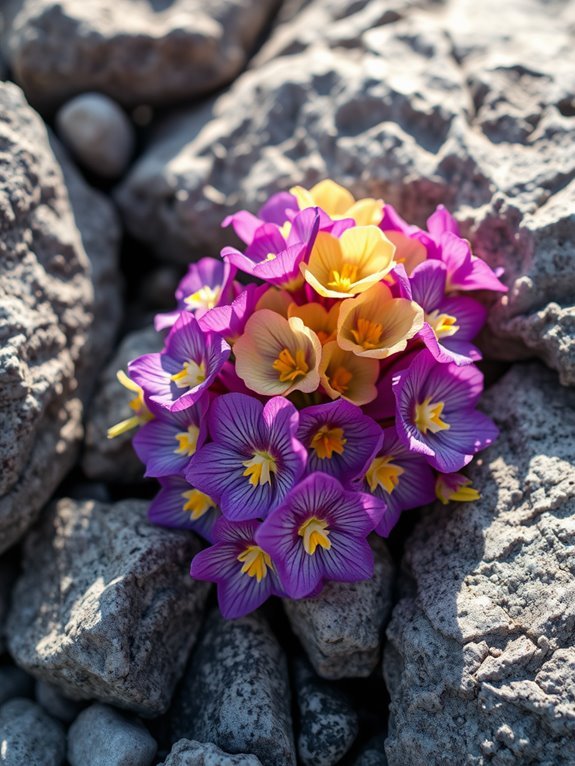
As spring rolls around and the sun starts to warm the earth, you can’t help but notice the cheerful faces of Johnny Jump-Ups (Viola tricolor) popping up in gardens everywhere!
These delightful little flowers come in vibrant purples, yellows, and whites, making them perfect for brightening up your rock garden. Plus, they’re super easy to care for!
Here’s how to enjoy them:
- Plant in well-drained soil for happy roots.
- Position them in partial shade to avoid wilting.
- Water them regularly, but don’t overdo it!
- Enjoy their charming blooms attracting butterflies.
Get ready for a colorful display!
Carpet Bugle (Ajuga Reptans)
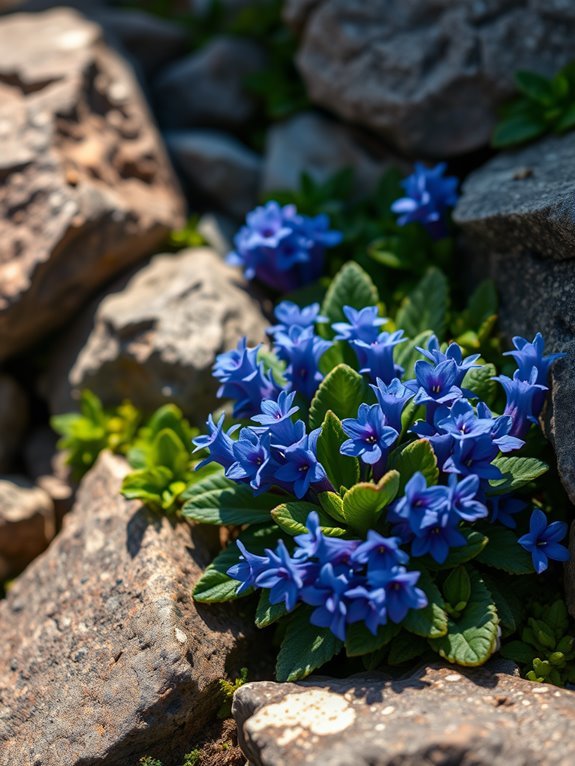
After being dazzled by the bright faces of Johnny Jump-Ups, you might be on the lookout for another charming addition to your rock garden.
Enter Carpet Bugle (Ajuga Reptans), a delightful ground cover that’ll steal your heart! With its lush, green leaves and stunning blue-violet flowers, it creates a vibrant carpet of color.
Plus, it’s low-maintenance—perfect for those who’d rather sip lemonade than pull weeds. This plant thrives in partial shade, making it a versatile choice.
Just watch out, it can spread quickly, like your neighbor’s cat claiming your sunniest spot! You’ll love its charm and easygoing nature!
Creeping Thyme (Thymus Serpyllum)
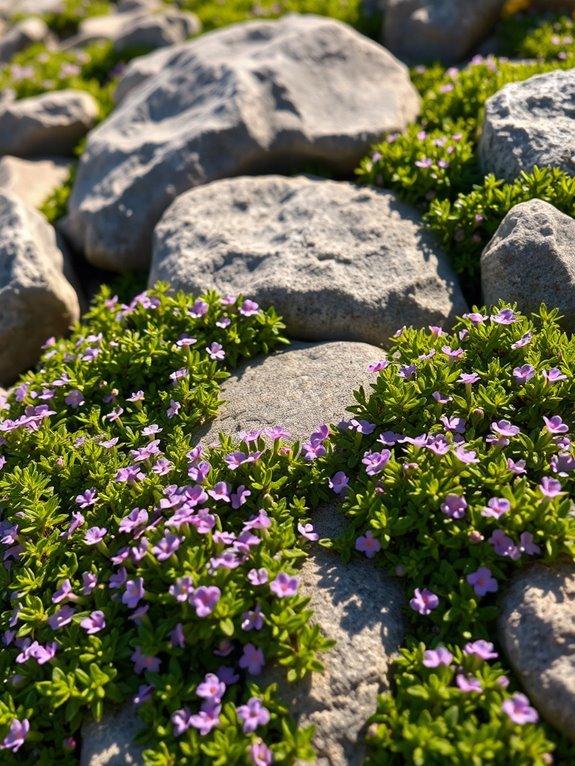
If you’re searching for a plant that brings both beauty and practicality to your rock garden, search no more than Creeping Thyme (Thymus serpyllum).
This charming ground cover thrives in sunny spots and adds a delightful fragrance whenever you step close. Plus, it’s a magnet for pollinators, so you’ll enjoy buzzing bees and fluttering butterflies!
Here are some perks of Creeping Thyme:
- Drought-tolerant and low-maintenance
- Beautiful purple flowers in summer
- Edible leaves for your culinary adventures
- Softens rocky areas with lush greenery
With Creeping Thyme, your rock garden will be vibrant and alive—what’s not to love?
Pansy (Viola X Wittrockiana)
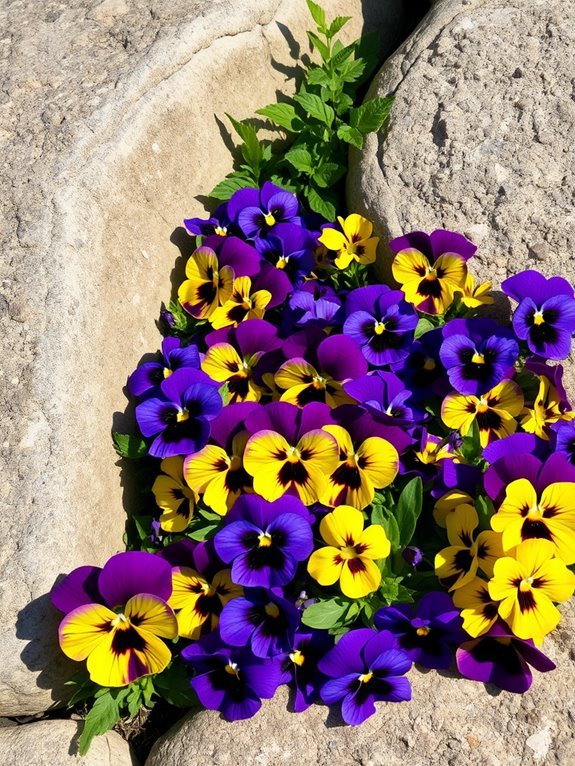
Ready to add a splash of color to your rock garden? Pansies are your go-to! With their cheerful faces and vibrant hues, they’re like the party guests of your garden.
You’ll love how they bloom in various colors, from sunny yellows to deep purples, making your space pop. Plus, they’re pretty tough; they can handle a bit of chill and still look fabulous!
Just plant them in well-drained soil, and watch them thrive. And let’s be honest, who wouldn’t want to chat with a flower that looks like it’s smiling back at you?
Pansies make rock gardens truly delightful!
Dianthus (Dianthus Spp.)
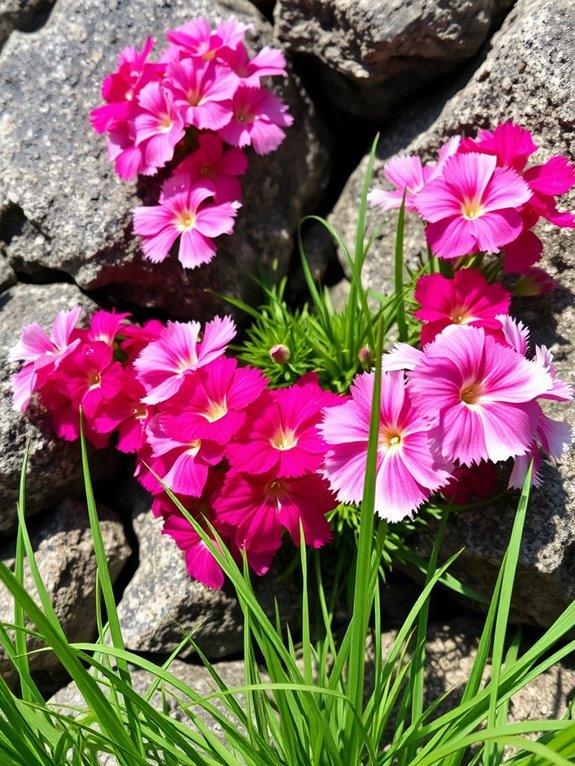
When you’re looking to add a touch of charm and whimsy to your rock garden, Dianthus is a fantastic choice!
These delightful little flowers, often called “pinks,” boast vibrant colors and a lovely fragrance. They thrive in rocky, well-drained soil, making them perfect for your garden.
Here’s why you’ll love Dianthus:
- Variety: They come in many colors, from soft pastels to bold hues.
- Low Maintenance: They require minimal care once established.
- Perennial: Enjoy them year after year!
- Pollinator-Friendly: They attract bees and butterflies, adding life to your garden.
Get ready to enjoy their beauty!
Frequently Asked Questions
What Is the Ideal Soil Type for Small Flowering Plants?
For small flowering plants, you’ll want well-draining soil that retains some moisture but doesn’t become soggy. A mix of sandy loam and organic matter often works best, providing nutrients while preventing root rot.
How Often Should I Water My Rock Garden Plants?
Did you know overwatering can kill 30% of your plants? You should water your rock garden plants once a week, ensuring the soil dries out between sessions. Adjust frequency based on rainfall and temperature changes.
Can These Plants Survive Harsh Winter Conditions?
Yes, many plants can survive harsh winter conditions. You’ll want to guarantee good drainage and mulching to protect roots. Choose hardy varieties, and they’ll thrive despite the cold. Just monitor them regularly for signs of stress.
Do These Plants Attract Pollinators Like Bees and Butterflies?
Yes, these plants attract pollinators like bees and butterflies. You’ll notice increased activity around them, enhancing your garden’s ecosystem. By planting these flowers, you’re supporting crucial pollinator populations and creating a vibrant, lively environment.
What Is the Best Time to Plant These Flowers?
Did you know that nearly 80% of flowering plants rely on pollinators? You’ll want to plant these flowers in spring or early fall when temperatures are mild, ensuring they establish strong roots for vibrant blooms.
Conclusion
As you embark on your rock garden journey, consider these small flowering plants as vibrant characters in your garden’s narrative. Each plant contributes to the beauty and activity, attracting pollinators and creating a lively atmosphere.
With a bit of care and creativity, your garden can become a stunning stage for nature’s performance. So grab your trowel, invite some friends, and let the blooms take center stage—your garden is eager for its moment!
